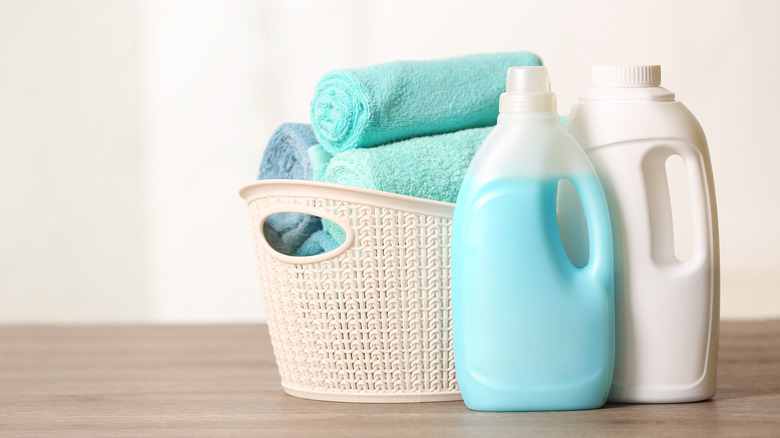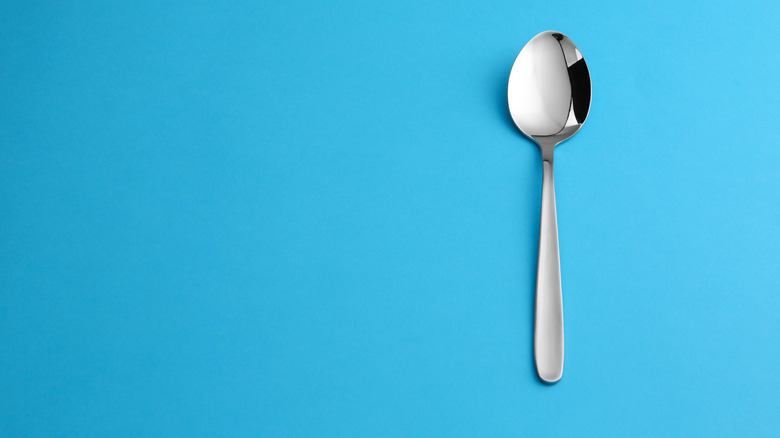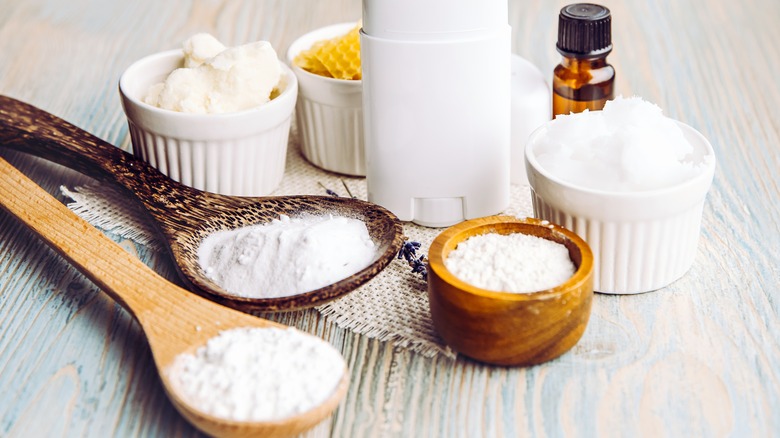How Much Fabric Softener Should You Actually Use Per Load?
Doing laundry is actually an art form if you think about it. Or maybe it's more of a science, but either way, you have to take the time to measure out detergents, work out the right temperatures and sort everything accordingly, then ensure you're using all the extras correctly for the best possible outcome. Bleach, dryer sheets, fabric softener; there are so many helpful products on the market to keep your clothes looking and feeling fresh, but that doesn't necessarily make them "no-brainers."
Understanding measurements and proportions is extremely important for your laundry cycles. Too much of a good thing can be bad for some materials, and you don't want to end up with build-up or residue on your fabrics. Wirecutter notes that by adding in too much detergent, for example, the suds can actually prevent friction between clothing items. When articles rub up against each other in the wash, they're removing detritus that would be otherwise trapped, so if there's no friction, you're losing some of the cleaning power.
The same goes for fabric softener: Using too much could be having an adverse effect on the results. So just how much of this liquid should you be adding to keep linens and fabrics soft, without going overboard?
Less is more
Fabric softener is a superstar among laundry products. Not only does it leave your clothes and other items smelling fresh, but the ingredients help to reduce the appearance of wrinkles, per Whirlpool. Using fabric softener can benefit your loads, especially when it comes to diminishing static and making materials feel velvety and cozy to the touch.
However, using it in moderation may be the best way to get all the advantages, without any drawbacks. Too much softener can sometimes cause skin irritation, or leave residue on clothing that might set off allergies. Because these products contain phthalates, which push out scents from the liquid to the fabric, EWG notes that if someone has sensitive skin, the synthetic fragrances could agitate it more, especially if you're using too much softener.
The best practice when it comes to fabric softener is less is more. WaveMAX Laundry suggests adding 1 or 2 tablespoons to each individual load. It's helpful to check the bottle before adding any liquid to your laundry, as some products can be more concentrated and potent. If the instructions suggest using less than the aforementioned amount, it's best to follow those guidelines instead. Further, each washing machine is different, but Downy recommends adding in liquid fabric softener during your appliance's rinse cycle.
Fabric softener substitutes
If fabric softeners seem to irritate you or your family's skin regardless of how little you use, there are alternatives that will still leave clothes soft and fragrant without the side effects. Baking soda is one such option. Because of its natural properties, adding baking soda in replacement of fabric softener is an easy and common option, and will leave your items feeling just as good as the latter.
The reason why baking soda works is because, like store-bought fabric softeners, it balances the water's pH. Laundry Heap notes that this powder staves off hard minerals and detergents which would otherwise gather on fibers, making them feel rough. If you're interested in testing this method, you only have to incorporate ½ cup of baking soda to your laundry load. Like with regular fabric softeners, you can add this during the final rinse cycle.
Finally, whether you stick to smaller amounts of liquid softener, or opt for this homemade option, when it comes to laundry products, remember not to overdo it. Your clothes will thank you.


